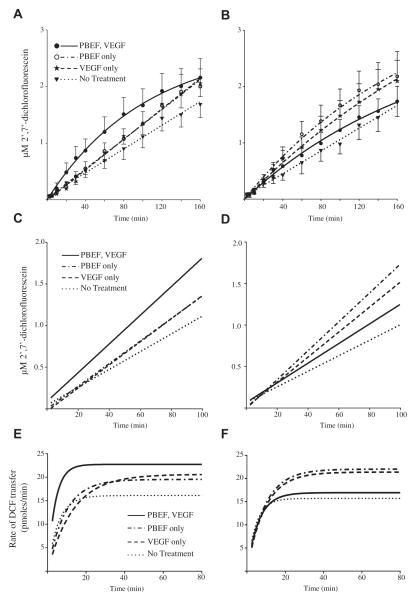Fig. 4.
PBEF and VEGF dual treatment increases the permeability of placental amnion explants, but not reflected. Amnion explants were separated into 4 treatment groups: untreated controls, PBEF (100 ng/ml) for 18 h, acute VEGF treatment (20 ng/ml), or PBEF (100 ng/ml) for 18 h with subsequent acute VEGF treatment (20 ng/ml). Concurrent with acute VEGF treatment, the transfer of 2′,7′-dichlorofluorescein (DCF) from the fetal to the maternal side of amnion explants was monitored in all treatment groups to observe changes in membrane permeability. The mean concentration of DCF that accumulated on the maternal side of the A) placental amnion (n = 12) and the B) reflected amnion (n = 7) at each time time point is displayed with standard error bars. The lines for each data set were derived from linear or nonlinear regression modeling as best fit the data. C and D are the linear regression lines fit to the initial 100 min of each data set from the placental amnion and reflected amnion respectively. To interpret the change in membrane permeability per unit time, the data were transformed to reveal the average rate of DCF transfer between each time point. This data were modeled using nonlinear regression and the curves are displayed for the placental (E) and reflected (F) amnion. As the maximum rate was constant in most experimental conditions past 80-min, the data are only displayed through 80 min.

